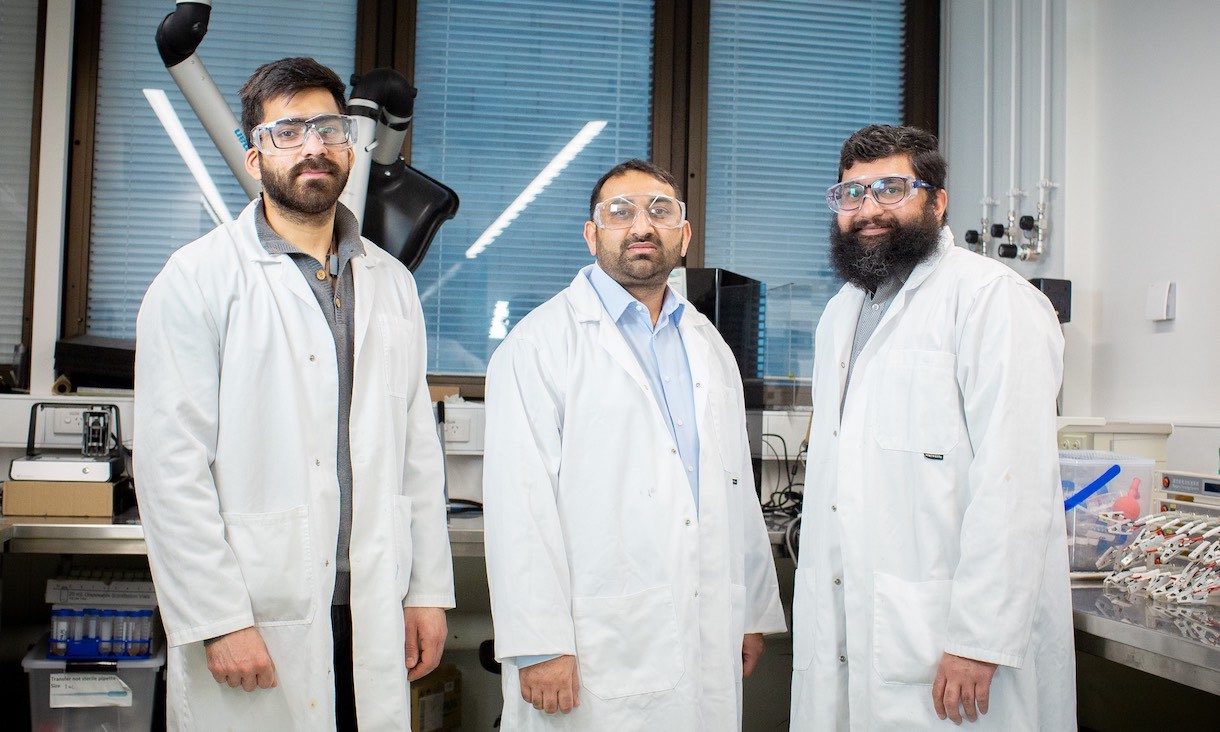Splitting the difference: a catalyst for seawater
To make green hydrogen, an electrolyser is used to send an electric current through water to split it into its component elements of hydrogen and oxygen.
These electrolysers currently use expensive catalysts and consume a lot of energy and water – it can take about nine litres to make one kilogram of hydrogen. They also have a toxic output: not carbon dioxide, but chlorine.
“The biggest hurdle with using seawater is the chlorine, which can be produced as a by-product. If we were to meet the world’s hydrogen needs without solving this issue first, we’d produce 240 million tons per year of chlorine each year – which is three to four times what the world needs in chlorine. There’s no point replacing hydrogen made by fossil fuels with hydrogen production that could be damaging our environment in a different way,” Mahmood said.
“Our process not only omits carbon dioxide, but also has no chlorine production.”
The new approach devised by a team in the multidisciplinary Materials for Clean Energy and Environment (MC2E) research group at RMIT uses a special type of catalyst developed to work specifically with seawater.
The study, with PhD candidate Suraj Loomba, focused on producing highly efficient, stable catalysts that can be manufactured cost-effectively.
“These new catalysts take very little energy to run and could be used at room temperature,” Mahmood said.
“While other experimental catalysts have been developed for seawater splitting, they are complex and hard to scale.
“Our approach focused on changing the internal chemistry of the catalysts through a simple method, which makes them relatively easy to produce at large-scale so they can be readily synthesised at industrial scales," Loomba said.
Mahmood said the technology had promise to significantly bring down the cost of electrolysers - enough to meet the Australian Government's goal for green hydrogen production of $2/kilogram, to make it competitive with fossil fuel-sourced hydrogen.
The researchers at RMIT are working with industry partners to develop aspects of this technology.
The next stage in the research is the development of a prototype electrolyser that combines a series of catalysts to produce large quantities of hydrogen.
‘Nitrogen-doped Porous Nickel Molybdenum Phosphide Sheets for Efficient Seawater Splitting’, co-authored by Suraj Loomba, Muhammad Waqas Khan, Muhammad Haris, Seyed Mahdi Mousavi, Nasir Mahmood, et al., is published in Small.
*Source: https://www.iea.org/fuels-and-technologies/hydrogen
Story by: Sarah Gates





